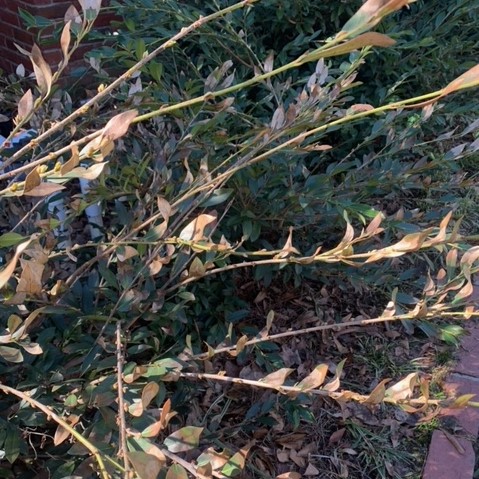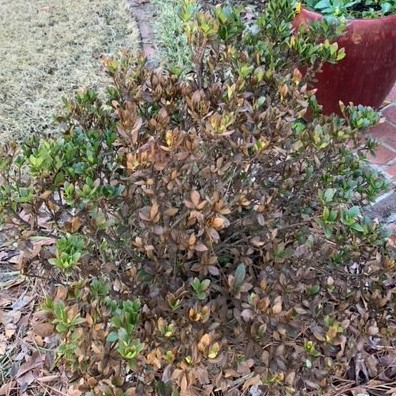

By Kathy Torres
The Blizzard of 1973, the worst snow storm in South Carolina history! Nearly two feet of snow accumulated in the Midlands in February over a 3-day period, at the average rate of an inch per hour in the first 24 hours. My family had just moved to South Carolina, our driveway was on a slope and we couldn’t get the car up the hill for a week. We never, in our wildest dreams, thought severe winter weather would impact our lives so dramatically in South Carolina. I can’t think of a better example to use to demonstrate the unpredictable and traumatic effect of severe weather. A winter storm of this nature is certainly not the “norm” for us here in South Carolina, but sometimes… it happens! A more recent example of abnormal weather here is the 6-day cold spell we had last Christmas. Accuweather.com shows the low temperatures between Dec. 23 and 28, 2022 all below freezing, with 4 nights from 12–18 degrees. Casualties of this cold spell were our power bills and our plants.
The U.S. Department of Agriculture provides a guide for planting by distinguishing zones throughout the country directly related to the average low temperatures. Click HERE for the map. South Carolina is divided into the following zones which include the upstate, midlands, and coast:

Primarily for farmers, this information provides a guide for selecting crops that will grow and thrive in various regions throughout the U.S. In addition, most ornamental (landscape) plant growers provide a zone recommendation, which can usually be found on the plant tag. At Wingard’s, our inventory consists of plant specimens zoned for the Midlands (8a), however, we include some plants that will need to be protected in winter, such as citrus and other tropicals. Keep in mind, the zoning recommendation is provided with the “typical” climate in mind. Because of the possibility of unpredictable severe weather, there is not a guarantee that all plants zoned appropriately will survive. How many times over the years have the peach farmers in SC suffered loss of crops because of a late frost or freeze. If we have our typical seasonal weather, all is good, but Mother Nature can be quite fickle and decide she’s just not yet in the mood for warmer days and nights.
It’s painfully obvious now… many plants that usually do fine in winter here were damaged by the extreme cold we recently experienced, some, even beyond help. Covering vulnerable plants may have helped, but potentially may not have been enough in these lower than normal temperatures, especially with consecutive days. Camellia buds may have dropped without opening into full flowers. Plants such as Palms, especially the Sago, as well as Oleander, Bottle Brush, Farfugium, Acanthus and even Lomandra Breeze ornamental grass are showing signs of damage. I’ve noticed my Mediterranean Palm and Distylium are looking burned. These are plants that typically handle our “normal” cold weather without an issue. I moved my Meyer Lemon to the garage, so it’s ok. There is nothing to do about plant damage right now. Do not prune! Be patient and wait until spring to see if new growth appears. After the danger of frost has passed (usually April), fertilize and prune away the brown foliage. If new growth does not appear, cut a branch or two on the plant to determine if the plant is dead. If the inside of the branch is green, it may just need a little more recovery time. If the inside is brown, you are out of luck. Sometimes, only a portion of the plant may have been affected. Then it’s up to you to determine whether to remove the dead part and see if the plant will regain shape and fullness, or dig it up and start over.
Sometimes plants such as Azaleas, Pittosporum, Hollies, Gardenias, and Mimosa trees won’t reveal winter damage until the heat kicks in about June. If you see branches beginning to yellow and die out this summer, look closely at the bark on the dying branches. If you see the bark has split, this is due to the sap freezing. When the plant tries to function in the summer, it can’t get enough water and nutrients in its stems, so it dies back. If the affected areas are just some of the limbs, you can cut out the dead material and let the plant recover. If the primary trunk is affected, the plant may not survive.
At Wingard’s, we guarantee our plants after purchase, as long as proper planting and care are indicated. We do not, however, guarantee their survival in extreme winter weather. It’s only February, and we may have more cold weather ahead, so here are a few tips for protecting plants that are vulnerable:
- Do not cover plants with plastic.
- Cover with sheets, burlap or frost cloth when below freezing temperature is expected.
- Anchor cloth with bricks or rocks to keep it from blowing off.
- Remove cover when temperature is above freezing.
- Wrap plant with outdoor low voltage lights, underneath cover (be sure to turn them off and remove cover when temperature rises above freezing).
Spring is a bit far away at this moment in time, and as much as we want to be outside, it’s often more sensible to stay in. So, in that case, embrace the winter … sit by the fireplace, grab a blanket and a good book, a cup of hot chocolate, and RELAX. Be mindful of any freeze warnings in the weather forecast and cover plants that need protection, but don’t stress over it. And let’s all cross our fingers that Mother Nature is in a good mood for spring 2023!

